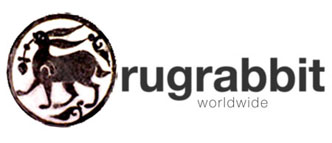Back
Posted Today
This finely woven carpet is inspired by a historical Persian banknote from the late Qajar period, dating to the early twentieth century. During the reign of Naser al-Din Shah Qajar (1848–1896) and in the years that followed, Iran entered a period of modernization that included the establishment of the Imperial Bank of Persia (Bank-e Shahanshahi Iran) in 1889 and the introduction of printed currency. The design of this carpet faithfully reproduces the appearance of one of these early banknotes — a 100 Toman note dated 17 August 1908, originally issued by the Imperial Bank and payable only at its Tabriz branch.
A very realistically woven 100 Toman banknote featuring the image of Naser al-Din Shah forms the central field of the carpet. Because banknotes lack borders, the weaver added an elaborate decorative frame composed of traditional rug motifs rather than conventional banknote patterns, creating a fascinating blend of financial history and Persian textile art. The composition includes the Lion and Sun emblem, the national symbol of Persia during the Qajar dynasty, representing strength, justice, and sovereignty. The central medallion, woven with intricate Persian calligraphy, corresponds to the denomination “100 Tomans” (صد تومان) and the inscription “Bank-e Shahanshahi Iran” (Imperial Bank of Iran). These details are framed by ornamental designs reminiscent of engraved British banknotes produced by firms such as Bradbury, Wilkinson & Co.
The English inscription “payable at tabriz only” appears at the bottom, as on the original notes, reinforcing the carpet’s link to the historical branch network of the Imperial Bank. The date “17 August 08” is historically accurate, matching the dating convention of genuine Imperial Bank notes from 1908, when Tabriz was a major hub of trade and finance in northern Persia.
Far more than a decorative reproduction, this piece captures the intersection of art, economy, and national identity in early modern Iran. It stands as a testament to the creativity and precision of Persian weavers who transformed a symbol of monetary progress into a timeless work of art.
A rug that won’t leave your guests indifferent — perfect for bankers and collectors alike!
Material: 100% hand-spun sheep wool
Size: 185×134 cms
Origin: Tabriz?, Irán
Date of weaving: early 1900s
You can buy this rug directly from our web: https://www.nomada.biz/en/producto/antique-tabriz-banknote-rug-from-iran/
price:
Not 100 Toman as writen in rug but 2500€
- Home
- Antique Rugs by Region
- Category
- Profiles
- Post Items Free
- Albums
- Benaki Museum of Islamic Art
- Budapest: Ottoman Carpets
- Gulbenkian Museum
- Islamic Carpets. Brooklyn
- Islamic Textiles. Brooklyn
- Konya Museum: Rugs
- MKG, Hamburg
- MMA: Caucasian Carpets
- MMA: Mamluk Carpets
- MMA: Mughal Indian Carpets
- MMA: Ottoman Carpets
- MMA: Safavid Persian Carpets
- MMA: Turkmen Rugs
- McCoy Jones Kilims
- Ottoman textiles. Met
- Philadelphia Museum
- Rugs and Carpets: Berlin
- Seljuqs at the Met
- TIEM, Istanbul: Carpets
- V&A: Classical Carpets
- Vakiflar Carpets: Istanbul
- Baluch Rugs: Indianapolis
- Gallery Exhibitions
- Jaf an Exhibition
- Alberto Levi Gallery
- Andean Textile
- Christie's London: 2016
- Francesca Galloway
- HALI at 40
- ICOC Washington, DC 2018
- Jajims of the Shahsavan
- London Islamic Week April, 2018
- Mongolian Felts
- Navajo Rugs: JB Moore
- Persian Piled Weavings
- SF Tribal & Textile Art Show 2020
- SF Tribal 2019
- Sotheby's: C. Alexander
- Turkish Prayer Rugs
- Turkmen Main Carpets ICOC 2007





















